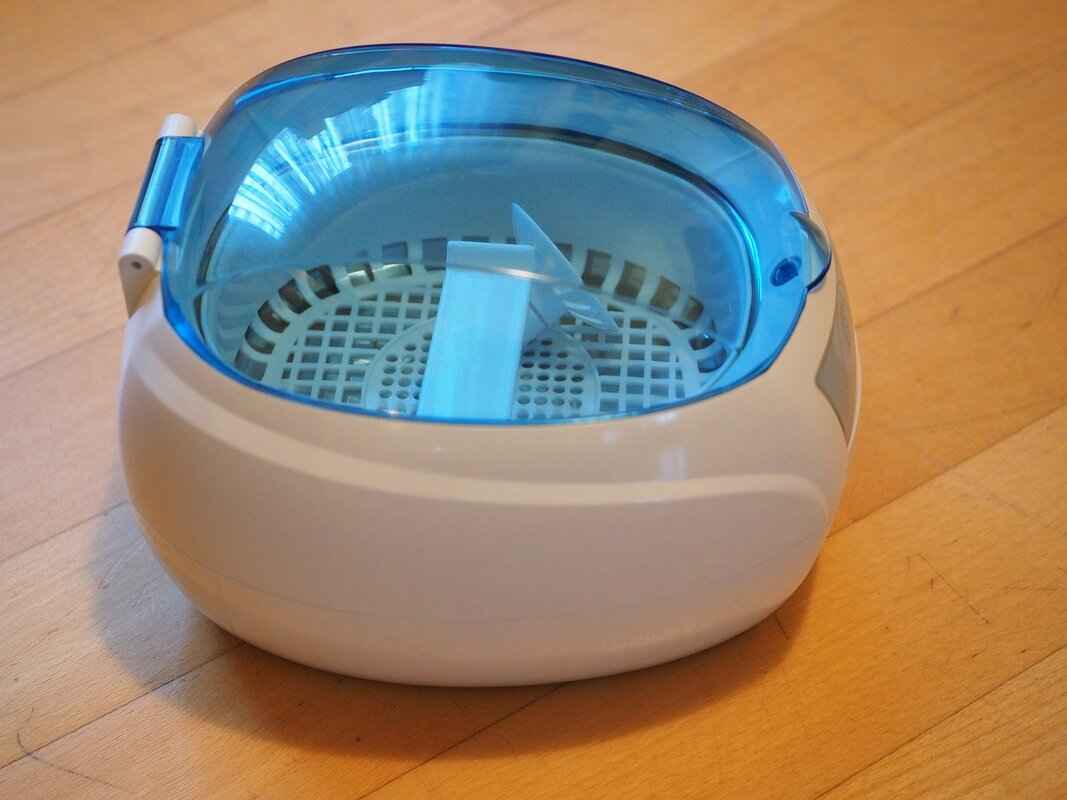This article serves as a comprehensive guide on effectively cleaning car headliners while preventing damage. Car interiors can accumulate dirt and stains over time, making it essential to maintain them. In this guide, you will discover techniques, tools, and tips for keeping your vehicle’s interior in pristine condition.
Understanding Car Headliners
A car headliner is the fabric or material that lines the roof of a vehicle’s interior. It serves several purposes, including insulation, soundproofing, and aesthetic enhancement. Understanding the type of material used in your headliner is crucial for effective cleaning, as different materials require different care methods.
Common Types of Headliner Materials
- Fabric Headliners: Known for their visual appeal, fabric headliners can be challenging to clean. They often require gentle cleaning methods to avoid damaging the fibers.
- Vinyl Headliners: These are more durable than fabric and easier to clean. However, they can still be harmed by harsh chemicals, so it’s essential to choose the right cleaning agents.
- Foam-Backed Headliners: Providing insulation and soundproofing, foam-backed headliners are sensitive to moisture and need special care to prevent peeling or sagging.
Signs Your Headliner Needs Cleaning
Recognizing when your headliner requires cleaning is key to maintaining your vehicle’s interior. Look for the following signs:
- Stains and Spots: Accumulation of stains from spills or other substances can become permanent if not addressed promptly.
- Odors: Unpleasant smells, often due to mildew or trapped moisture, can emanate from a dirty headliner. Regular cleaning helps eliminate these odors.
- Sagging Headliner: A sagging headliner may indicate failing adhesive or moisture damage. Cleaning can sometimes alleviate this issue, but re-gluing may be necessary.
Essential Tools for Cleaning
Equipping yourself with the right tools simplifies the cleaning process. Here are essential items you’ll need:
- Soft Brushes: Use upholstery brushes or paintbrushes to gently loosen dirt without damaging the headliner.
- Microfiber Cloths: These are perfect for cleaning and drying surfaces without leaving lint or scratches.
- Vacuum Cleaner with Brush Attachment: This tool helps remove loose dirt and debris before applying any cleaning solutions.
Safe Cleaning Solutions
Selecting the right cleaning solution is crucial to avoid damaging your headliner. Here are some safe options:
- Water and Mild Detergent: A simple mixture of water and mild detergent can effectively clean most headliner materials.
- Upholstery Cleaner: Specialized cleaners are formulated to safely clean various fabrics. Always test a small area first.
- Vinegar Solution: A vinegar and water mix can help eliminate odors and stains but should be used sparingly on sensitive materials.
Step-by-Step Cleaning Process
Following a systematic approach ensures effective cleaning without causing damage. Here’s a step-by-step guide:
- Preparation: Gather all necessary tools and cleaning solutions. Park the vehicle in a shaded area to prevent cleaning products from drying too quickly.
- Testing a Small Area: Always test your chosen cleaning solution on a small, inconspicuous area to ensure it won’t cause discoloration or damage.
- Cleaning the Headliner: Use a soft brush to gently agitate the surface and loosen dirt. Apply your cleaning solution with a microfiber cloth, working in small sections to avoid oversaturation.
Drying and Maintenance Tips
Proper drying techniques are essential to prevent water damage and maintain the headliner’s integrity:
- Air Drying: Allow the headliner to air dry completely after cleaning. Avoid using heat sources that could warp or damage the material.
- Regular Maintenance: Regularly dusting and vacuuming the headliner can help prevent dirt buildup. Consider using a fabric protector to enhance durability and resistance to stains.
- Professional Cleaning Services: If your headliner is heavily soiled or damaged, consider hiring a professional cleaning service. They have specialized tools and expertise to restore your headliner without causing harm.

Understanding Car Headliners
A car headliner serves as a critical component of a vehicle’s interior, providing not only aesthetic appeal but also functional benefits. It is the fabric or material that lines the roof, creating a finished look while also serving to insulate and reduce noise. Understanding the purpose and materials of headliners is crucial for effective maintenance and cleaning to prevent damage.
The headliner is often one of the first interior elements to show signs of wear and tear. This is due to its exposure to sunlight, temperature changes, and moisture, which can lead to fading, sagging, and staining. The headliner plays a vital role in enhancing the overall driving experience by contributing to the vehicle’s comfort and style.
Headliners are constructed from various materials, each with unique characteristics and care requirements. Common materials include:
- Fabric: Typically made from polyester or nylon, fabric headliners are popular for their softness and variety of colors. However, they can be prone to stains and may require special cleaning methods.
- Vinyl: This durable material is easier to clean and maintain than fabric. Vinyl headliners are resistant to moisture and stains but can still be damaged by harsh chemicals or excessive heat.
- Foam-Backed Materials: These headliners provide insulation and soundproofing but can be sensitive to moisture. Proper care is essential to prevent issues such as peeling or sagging.
Understanding the specific type of headliner in your vehicle is essential for selecting the right cleaning methods and products. For instance, fabric headliners may require a gentler approach to avoid damaging the fibers, while vinyl headliners could withstand more robust cleaning solutions. Additionally, recognizing the signs that indicate your headliner needs attention—such as stains, unpleasant odors, or sagging—can help maintain the integrity and appearance of your vehicle’s interior.
In summary, comprehending the purpose and materials of car headliners is fundamental for effective cleaning and maintenance. By being aware of the different types of materials and their specific care requirements, vehicle owners can ensure their headliners remain in top condition, enhancing both the aesthetic and functional aspects of their cars.
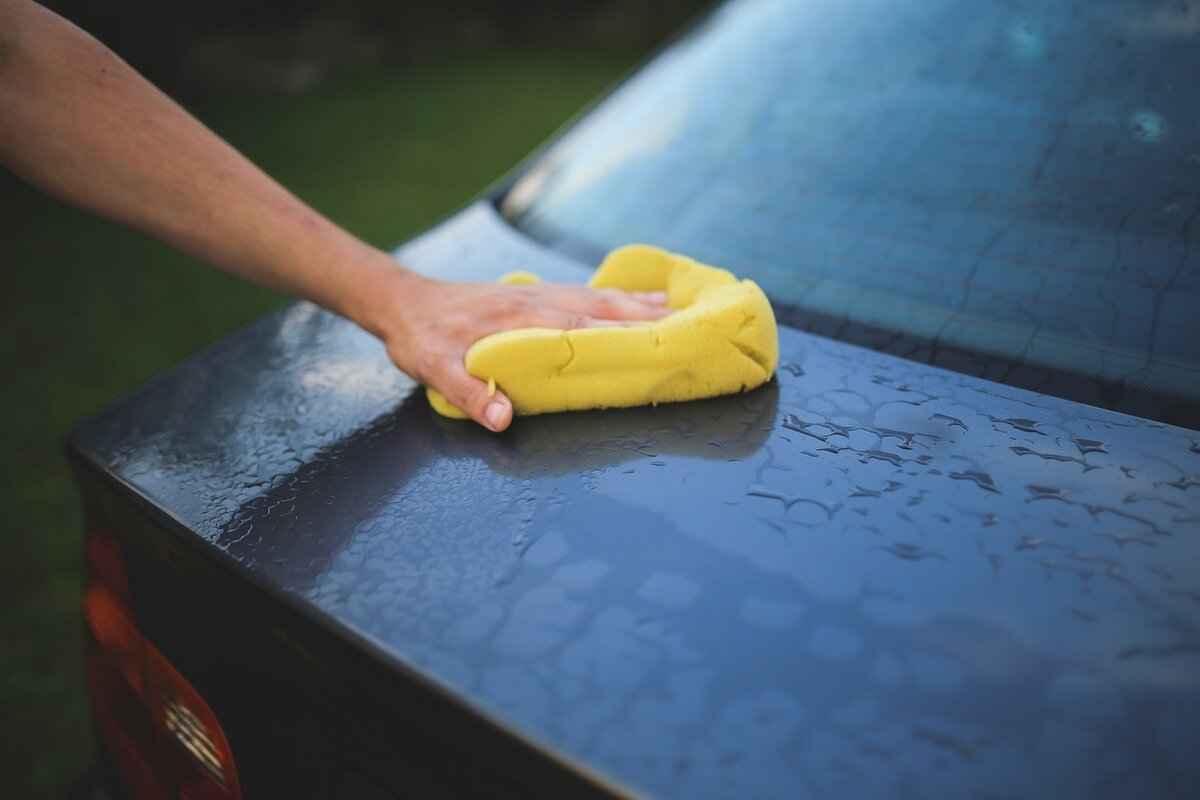
Common Types of Headliner Materials
When it comes to maintaining your vehicle’s interior, understanding the different types of headliner materials is crucial. Each material has unique characteristics that dictate how it should be cleaned and cared for. This knowledge helps ensure that your cleaning efforts do not inadvertently cause damage.
- Fabric Headliners: Fabric headliners are widely appreciated for their aesthetic appeal and comfort. They come in a variety of textures and colors, enhancing the overall look of the vehicle’s interior. However, they can be prone to staining and can absorb odors over time. Cleaning fabric headliners requires gentle techniques to avoid damaging the fibers. It is advisable to use a soft brush and a mild cleaning solution, as harsh chemicals can lead to discoloration.
- Vinyl Headliners: Vinyl headliners are a more durable option, known for their ease of maintenance. They are less likely to stain and can withstand more aggressive cleaning methods compared to fabric. However, it is still important to avoid using harsh chemicals that can degrade the vinyl over time. A simple mixture of water and mild detergent is usually sufficient for cleaning vinyl headliners, making them a practical choice for busy car owners.
- Foam-Backed Headliners: These headliners combine a fabric or vinyl surface with a foam backing that provides insulation and soundproofing. While they offer several advantages, foam-backed headliners can be sensitive to moisture. Excessive wet cleaning can cause the foam to become detached, leading to sagging or peeling. It is crucial to use minimal moisture when cleaning foam-backed headliners and to opt for products specifically designed for this material.
Understanding these common types of headliner materials not only helps in selecting the right cleaning method but also enhances the longevity of your vehicle’s interior. By knowing the characteristics of each type, you can tailor your cleaning approach to ensure the best results without risking damage.
In summary, whether you have a fabric, vinyl, or foam-backed headliner, each type requires a specific cleaning method to maintain its integrity and appearance. By taking the time to understand these materials, you can keep your car’s interior looking fresh and inviting.
Fabric Headliners
Fabric headliners are a popular choice among car owners due to their visual appeal and ability to add a touch of elegance to the vehicle’s interior. However, they come with their own set of challenges, particularly when it comes to maintenance and cleaning. Understanding the unique properties of fabric headliners is essential for preserving their appearance and longevity.
Fabric headliners are often favored for their soft texture and ability to absorb sound, creating a quieter cabin. They come in various colors and patterns, allowing for customization that can enhance the overall aesthetic of the vehicle. Additionally, fabric headliners can provide better insulation compared to other materials, contributing to a more comfortable driving experience.
Despite their advantages, fabric headliners can be quite difficult to clean. The fibers are prone to staining from spills, dirt, and oils, which can lead to unsightly marks over time. Furthermore, using the wrong cleaning methods or products can result in permanent damage or discoloration. Therefore, it is crucial to adopt a gentle approach when cleaning fabric headliners.
To effectively clean fabric headliners without causing damage, consider the following methods:
- Vacuuming: Start by using a vacuum cleaner with a brush attachment to remove loose dirt and debris. This step is essential to prevent dirt from becoming embedded in the fibers during the cleaning process.
- Spot Cleaning: For stains, prepare a mixture of mild detergent and water. Dampen a microfiber cloth with the solution and gently dab the stained area. Avoid soaking the fabric, as excessive moisture can lead to sagging or peeling.
- Drying: After spot cleaning, allow the area to air dry completely. It is vital to avoid using heat sources, as they can warp the material and compromise its integrity.
To keep your fabric headliner looking its best, regular maintenance is key. Here are some tips:
- Regular Dusting: Use a soft brush or microfiber cloth to dust the headliner regularly. This simple step can prevent dirt buildup and keep the fabric fresh.
- Fabric Protectors: Consider applying a fabric protector to enhance the headliner’s resistance to stains and spills. This can provide an added layer of defense against everyday wear and tear.
- Immediate Attention to Stains: Address any spills or stains immediately to prevent them from setting. The sooner you act, the easier it will be to remove the marks.
If your fabric headliner is heavily soiled or shows signs of damage, it may be time to consult a professional cleaning service. Professionals have access to specialized tools and cleaning solutions that can effectively restore your headliner without risking further damage. They can also assess any underlying issues, such as sagging or adhesive failure, and provide appropriate solutions.
In summary, while fabric headliners add beauty and comfort to your vehicle, they require careful maintenance to keep them looking their best. By understanding the proper cleaning techniques and preventive measures, you can enjoy the aesthetic appeal of fabric headliners without the worry of damaging them.
Vinyl Headliners
Vinyl headliners have gained popularity in the automotive industry due to their **durability** and **ease of maintenance** compared to traditional fabric options. Understanding the advantages of vinyl headliners is essential for car owners who want to maintain the aesthetic and functional aspects of their vehicle’s interior.
- Durability: Vinyl headliners are designed to withstand wear and tear much better than fabric alternatives. They are less prone to tearing, fraying, or showing signs of age, making them an ideal choice for families with children or pets.
- Easy to Clean: Unlike fabric headliners that may absorb stains and odors, vinyl surfaces can be wiped down with a damp cloth, making regular maintenance a breeze. This ease of cleaning helps keep your vehicle looking fresh and new.
- Water Resistance: Vinyl is inherently more resistant to moisture than fabric. This feature minimizes the risk of mold and mildew growth, especially in humid climates.
- Variety of Styles: Vinyl headliners come in various colors and finishes, allowing car owners to customize their interiors according to personal preferences.
Despite these advantages, it’s crucial to handle vinyl headliners with care. They can still be susceptible to damage from harsh chemicals and abrasive cleaning tools. When cleaning, always opt for mild cleaning solutions that are safe for vinyl surfaces.
Cleaning Tips for Vinyl Headliners
1. **Use Gentle Cleaning Solutions:** A mixture of water and mild detergent is often sufficient for cleaning vinyl headliners. Avoid using bleach or strong solvents, as these can cause discoloration or deterioration of the material.
2. **Soft Cleaning Tools:** Utilize soft brushes or microfiber cloths to gently clean the surface. These tools help to avoid scratching the vinyl while effectively removing dirt and grime.
3. **Spot Testing:** Before applying any cleaning solution to the entire headliner, conduct a spot test in an inconspicuous area. This step ensures that the cleaner does not adversely affect the vinyl.
4. **Avoid Over-Saturation:** When cleaning, apply the solution lightly and avoid soaking the headliner. Excess moisture can lead to adhesive failure, causing the headliner to sag or peel away from the roof.
5. **Regular Maintenance:** To keep vinyl headliners looking their best, incorporate regular cleaning into your vehicle maintenance routine. Simple tasks like dusting and vacuuming can help prevent buildup and extend the life of the headliner.
In summary, vinyl headliners offer a practical and stylish solution for car interiors. Their durability and ease of cleaning make them an excellent choice for many vehicle owners. However, it’s essential to use appropriate cleaning methods to maintain their appearance and functionality. By following the tips outlined above, you can ensure that your vinyl headliner remains in great condition for years to come.
Foam-Backed Headliners
Foam-backed headliners are an integral part of many vehicles, offering a blend of aesthetic appeal and functional benefits. These headliners consist of a layer of foam sandwiched between the fabric and the vehicle’s roof, providing excellent insulation and soundproofing. However, while they enhance the driving experience, they also come with specific care requirements that every vehicle owner should be aware of.
Foam-backed headliners are designed to improve the overall comfort of a vehicle. The insulation properties help maintain a consistent temperature inside the car, making it more enjoyable for passengers, regardless of the weather outside. Additionally, the soundproofing qualities reduce road noise, allowing for a quieter ride. This can be particularly beneficial for long-distance travelers or those who frequently drive in busy urban environments.
Despite their advantages, foam-backed headliners are notably sensitive to moisture. Excessive humidity or spills can lead to significant problems, including the potential for peeling or sagging. When moisture seeps into the foam, it can compromise the adhesive that holds the headliner in place, causing it to detach from the roof. Therefore, it is crucial to take special care when cleaning or maintaining these headliners to avoid such issues.
When it comes to cleaning foam-backed headliners, a gentle approach is essential. Here are some recommended techniques:
- Use a Soft Brush: Start by using a soft brush or upholstery brush to gently remove dust and dirt from the surface. This prevents any abrasive action that could damage the fabric.
- Spot Clean with Caution: For stains, use a damp microfiber cloth with a mild detergent solution. Avoid soaking the headliner, as excess moisture can lead to sagging.
- Avoid Harsh Chemicals: Stay away from bleach or ammonia-based cleaners, as they can break down the foam and fabric, leading to deterioration.
To prolong the life of your foam-backed headliner, consider implementing the following preventive measures:
- Regular Inspections: Periodically check for signs of sagging or peeling. Early detection can help you address issues before they worsen.
- Limit Exposure to Moisture: Whenever possible, avoid eating or drinking in the vehicle to minimize the risk of spills.
- Utilize Fabric Protectors: Applying a fabric protector can help repel stains and moisture, providing an additional layer of defense against damage.
In summary, foam-backed headliners offer numerous benefits, including insulation and soundproofing, but require careful maintenance to avoid moisture-related issues. By employing gentle cleaning techniques and taking preventive measures, vehicle owners can ensure the longevity and appearance of their headliners. Understanding the unique characteristics of foam-backed headliners is essential for maintaining a comfortable and aesthetically pleasing vehicle interior.
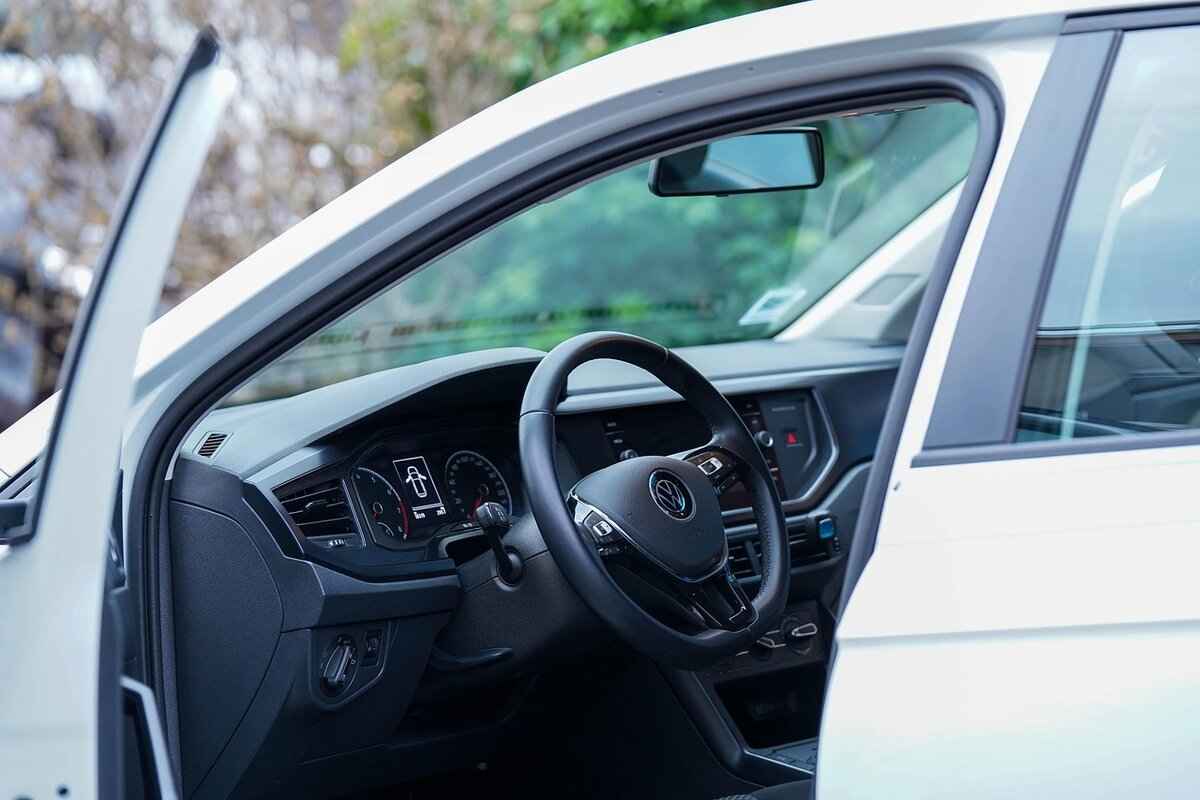
Signs Your Headliner Needs Cleaning
Maintaining the interior of your vehicle is crucial for both aesthetics and hygiene. One often overlooked component is the headliner—the fabric or material that lines the roof of your car. Over time, this area can accumulate dirt, stains, and odors, indicating it needs a thorough cleaning. Recognizing these signs early can prevent further damage and keep your vehicle looking its best.
- Visible Stains and Spots: One of the most obvious signs that your headliner requires cleaning is the presence of stains. These can come from spilled drinks, food, or even dirt from passengers. If you notice any discoloration or spots, it’s essential to address them promptly. Ignoring these stains can lead to permanent marks that are much harder to remove later.
- Unpleasant Odors: Another indicator that your headliner needs attention is the presence of unpleasant smells. These odors can arise from trapped moisture, mildew, or even smoke. If your vehicle has a musty smell, it may be time to clean the headliner to eliminate the source of the odor and refresh the interior environment.
- Sagging or Loose Fabric: A sagging headliner can be a sign that the adhesive has deteriorated or that moisture has affected the material. If you notice that the headliner is hanging lower than usual or appears loose, it may require cleaning and possibly re-gluing. Addressing this issue promptly can prevent further deterioration and restore the headliner’s appearance.
- Dust and Dirt Accumulation: Over time, dust and dirt can accumulate on the headliner, making it appear dull and dirty. Regularly inspecting the headliner for dust buildup can help maintain its appearance. A quick clean can often restore its original look and feel.
- Allergy Symptoms: If you or your passengers begin to experience allergy symptoms such as sneezing, coughing, or itchy eyes while in the vehicle, it may be due to allergens trapped in the headliner. Cleaning the headliner can help reduce allergens and improve air quality inside the car.
In summary, being aware of the signs that your headliner needs cleaning can help maintain your vehicle’s interior. Regular inspections for stains, odors, sagging, and dust can prevent long-term damage and ensure a pleasant driving experience. If you notice any of these signs, it’s advisable to take action promptly to restore your headliner to its best condition.
Stains and Spots
When it comes to maintaining your vehicle’s interior, the headliner often gets overlooked. However, it can accumulate unsightly stains and spots from various sources, including food, drinks, and other substances. Understanding how to address these stains early is crucial in preventing them from becoming permanent fixtures on your headliner.
- Types of Stains: Stains can come from numerous sources. Common culprits include spilled coffee, soda, or food particles. Each type of stain may require a different cleaning approach.
- Identifying Stains Early: Early detection is vital. If you notice a stain, it’s essential to act quickly. The longer a stain sits, the more likely it is to set into the fabric, making it much harder to remove.
- Potential Damage: Some stains can lead to further issues, such as odors or mildew growth, especially if moisture is involved. Addressing stains promptly can help mitigate these risks.
Why Stains Occur
Stains on headliners often occur due to spills or accidental contact with dirty items. For instance, leaning against the headliner with dirty clothing or accessories can transfer grime. Understanding the root cause of these stains can help you prevent future occurrences.
Cleaning Techniques
When it comes to cleaning stains from your headliner, using the right techniques is essential. Here are some effective methods to consider:
- Blotting Technique: For fresh stains, immediately blot the area with a clean, dry cloth. This technique helps absorb excess liquid without rubbing it further into the fabric.
- Gentle Cleaning Solutions: Use a mild detergent mixed with water for cleaning. Apply the solution using a microfiber cloth, ensuring not to oversaturate the fabric.
- Stain Removers: For tougher stains, consider using a specialized upholstery cleaner. Always test any product on an inconspicuous area first to avoid discoloration.
Preventive Measures
To keep your headliner looking pristine, consider implementing some preventive measures:
- Regular Maintenance: Regularly vacuuming the headliner can help remove dust and prevent dirt buildup that leads to stains.
- Use of Seat Covers: Using seat covers can protect against spills and dirt from passengers, reducing the likelihood of stains transferring to the headliner.
- Immediate Action: If a spill occurs, take immediate action to clean it up. The sooner you address the issue, the easier it will be to remove the stain.
Conclusion
In summary, stains and spots on your car’s headliner can be a nuisance, but with the right knowledge and techniques, they can be managed effectively. By understanding the types of stains, employing proper cleaning methods, and taking preventive measures, you can maintain a clean and attractive vehicle interior. Regular attention will not only enhance the aesthetic appeal of your car but also contribute to its overall longevity.
Odors
Odors in your vehicle can significantly impact your driving experience, making it uncomfortable and uninviting. One of the most common sources of unpleasant smells is the car headliner. Over time, headliners can accumulate dirt, moisture, and even mildew, leading to a musty or stale odor that can be hard to eliminate. Understanding the causes of these odors and how to address them is essential for maintaining a pleasant interior environment.
Causes of Odors in Car Headliners
Several factors contribute to the development of odors in car headliners. Here are some of the most common:
- Mildew Growth: Mildew thrives in damp, dark environments. If your vehicle has experienced leaks or high humidity, mildew can develop on the headliner, causing a foul smell.
- Trapped Moisture: Water can seep into the headliner from various sources, including rain or snow. If not properly dried, this moisture can lead to odors and even mold growth.
- Food and Drink Spills: Accidental spills can leave behind residues that not only stain but also produce unpleasant smells over time.
- Smoking: Cigarette smoke can cling to the headliner, leaving a persistent and unpleasant odor that can be challenging to remove.
How to Identify Odors from the Headliner
Recognizing the source of the odor is crucial for effective cleaning. Here are some tips to help you identify if your headliner is the culprit:
- Smell Test: Take a deep breath inside your vehicle. If the smell is musty or resembles dampness, it may indicate mildew or trapped moisture in the headliner.
- Visual Inspection: Look for signs of discoloration or stains on the headliner. These can often accompany odors and indicate areas that need attention.
- Source Elimination: If you suspect that the smell comes from the headliner, temporarily remove any other potential sources of odors, such as trash or food containers, to confirm.
Effective Cleaning Techniques to Remove Odors
Once you’ve identified that the headliner is the source of the unpleasant smell, it’s time to take action. Here are some effective cleaning techniques to eliminate odors:
- Vacuuming: Start by using a vacuum cleaner with a brush attachment to remove loose dirt and debris from the headliner. This step will help prepare the surface for deeper cleaning.
- Gentle Cleaning Solutions: Create a gentle cleaning solution using water and a mild detergent. Dampen a microfiber cloth with the solution and gently wipe the headliner, focusing on areas with visible stains or odors.
- Odor Neutralizers: Consider using an odor-neutralizing spray specifically designed for automotive interiors. These products can help eliminate lingering smells without damaging the headliner material.
- Drying: After cleaning, ensure the headliner is thoroughly dried. Leave the vehicle windows open or park it in a well-ventilated area to allow air circulation.
Preventing Future Odors
To keep your car smelling fresh and clean, consider the following preventive measures:
- Regular Cleaning: Establish a routine for cleaning the headliner and other interior surfaces. Regular maintenance can help prevent the buildup of dirt and odors.
- Use Dehumidifiers: If you live in a humid environment, consider using a dehumidifier in your car to reduce moisture levels and prevent mildew growth.
- Immediate Spill Cleanup: Address spills and stains immediately to prevent them from setting in and causing odors.
In conclusion, addressing odors from your car headliner is crucial for maintaining a pleasant driving experience. By understanding the causes of these odors and employing effective cleaning techniques, you can keep your vehicle’s interior fresh and inviting. Regular maintenance and preventive measures will go a long way in ensuring that your car remains a comfortable space for you and your passengers.
Sagging Headliner
A sagging headliner is a common issue that many vehicle owners encounter. It often signifies that the adhesive used to secure the headliner to the roof of the car is failing. This can occur due to **age**, **exposure to heat**, or **moisture** that has penetrated the material. Understanding the underlying causes and potential solutions can help you address this problem effectively.
- Causes of Sagging Headliners
- Adhesive Failure: Over time, the glue that holds the headliner in place can degrade, causing the fabric to loosen and sag.
- Moisture Damage: High humidity levels or leaks from the roof can lead to moisture build-up, which weakens the adhesive and causes sagging.
- Temperature Fluctuations: Extreme heat can cause the adhesive to lose its effectiveness, especially in cars parked under direct sunlight.
- Signs of a Sagging Headliner
- Visible Sagging: The most apparent sign is when the headliner starts drooping away from the roof.
- Unpleasant Odors: A damp headliner may emit musty smells, indicating moisture issues.
- Peeling Edges: If the edges of the headliner are peeling away from the car roof, it’s a clear sign of adhesive failure.
Cleaning and Repairing a Sagging Headliner
Cleaning a sagging headliner can sometimes alleviate the problem, particularly if moisture is the root cause. Here are some effective steps to consider:
- Initial Cleaning: Use a soft brush or a vacuum with a brush attachment to remove any loose dirt or debris from the headliner.
- Spot Cleaning: If there are stains, apply a mild detergent solution with a microfiber cloth. Gently dab the area without oversaturating the fabric to prevent further damage.
- Drying: Allow the headliner to air dry completely. Avoid using heat sources, as they can warp the material.
If cleaning does not resolve the sagging issue, re-gluing may be necessary. This process involves carefully removing the headliner, applying new adhesive, and reattaching it securely. Here’s a brief overview of how to approach this:
- Remove the Headliner: Carefully detach the headliner from the roof, taking care not to damage it. You may need to remove any trim pieces that are in the way.
- Apply New Adhesive: Use a high-quality spray adhesive designed for automotive fabrics. Apply it evenly across the roof and the back of the headliner.
- Reattach the Headliner: Press the headliner back into place, ensuring there are no wrinkles or air bubbles. Use weights or clamps to hold it in position while the adhesive cures.
In summary, a sagging headliner can be a frustrating issue, but with proper cleaning techniques and repair methods, it can often be restored to its original condition. Regular maintenance and attention to moisture levels can help prevent this problem from recurring in the future.

Essential Tools for Cleaning
Cleaning your car headliner effectively requires not only the right techniques but also the essential tools. Using appropriate tools can significantly enhance the cleaning process, making it easier and more efficient while minimizing the risk of damage. Below is a comprehensive list of the essential items you’ll need to clean your car headliner safely.
- Soft Brushes
Soft brushes, such as upholstery brushes or paintbrushes, are crucial for gently loosening dirt and grime from the headliner. These brushes help to avoid damaging the delicate fabric or material. Opt for brushes with soft bristles to ensure a gentle touch.
- Microfiber Cloths
Microfiber cloths are indispensable when it comes to cleaning. They are excellent for applying cleaning solutions and wiping away dirt without leaving lint or scratches. Their absorbent nature helps in effectively soaking up moisture, making them ideal for cleaning tasks.
- Vacuum Cleaner with Brush Attachment
A vacuum cleaner equipped with a brush attachment can be incredibly useful for removing loose dirt and debris from the headliner before applying any cleaning solutions. This step is essential to ensure that the cleaning process is effective and that dirt doesn’t get pushed deeper into the fabric.
- Spray Bottles
Using spray bottles allows for easy application of cleaning solutions. They enable you to control the amount of product you use, which is particularly important for preventing oversaturation of the headliner material.
- Soft Sponge
A soft sponge can be beneficial for applying cleaning solutions and gently scrubbing the surface. Choose a non-abrasive sponge to prevent any damage to the headliner.
- Cleaning Solutions
While not a tool per se, having the right cleaning solutions is vital. Look for gentle, fabric-safe cleaners that are specifically designed for automotive interiors. Always test any cleaning solution on a small, inconspicuous area first.
- Lint Roller
A lint roller can be a quick and effective tool for removing dust, hair, and other small particles from the headliner. It’s a simple way to keep the surface looking clean without the need for extensive cleaning.
Using the right tools not only makes the cleaning process more efficient but also helps ensure that your car’s headliner remains in good condition. Regular maintenance and cleaning with these essential tools can prolong the life of your headliner and keep your vehicle’s interior looking fresh and inviting.
Soft Brushes
Soft Brushes: The Ideal Tool for Cleaning Car Headliners
When it comes to cleaning car headliners, using the right tools is essential to ensure that the process is both effective and safe. Among the various tools available, stand out as one of the best options for this delicate task. This article delves into why soft brushes, such as upholstery brushes and paintbrushes, are ideal for gently loosening dirt without damaging the fabric or material of the headliner.
Soft brushes are specifically designed to provide a gentle touch while effectively removing dirt and debris. Their bristles are typically made from materials that are soft enough to avoid scratching or damaging the surface of the headliner. This is particularly important because headliners can be made from various materials, including fabric, vinyl, and foam-backed options, each with its own sensitivity to abrasion.
- Upholstery Brushes: These brushes are designed for cleaning fabric surfaces and are perfect for headliners. Their dense bristles can effectively lift dirt without causing any harm.
- Paintbrushes: A clean, soft paintbrush can also be an excellent tool for this purpose. They can reach into crevices and corners where dirt tends to accumulate.
- Detailing Brushes: Smaller detailing brushes are useful for intricate areas, allowing for precise cleaning without the risk of damaging surrounding material.
To achieve the best results when using soft brushes on your car headliner, follow these guidelines:
1. Begin by vacuuming the headliner with a vacuum cleaner equipped with a brush attachment to remove loose dirt and debris.2. Choose the appropriate soft brush based on the headliner material and the extent of dirt accumulation.3. Gently agitate the surface of the headliner with the soft brush, using light, circular motions to loosen dirt without applying too much pressure.4. If necessary, apply a mild cleaning solution to the brush to enhance its dirt-lifting capabilities, ensuring it is safe for the specific material of your headliner.5. After brushing, use a microfiber cloth to wipe away any loosened dirt and residue, ensuring a clean finish.
Using soft brushes for cleaning car headliners offers several advantages:
- Gentle Cleaning: The soft bristles help prevent any potential damage to the headliner material, preserving its appearance and integrity.
- Effective Dirt Removal: Soft brushes can effectively lift dirt and dust that may be embedded in the fibers, ensuring a thorough clean.
- Versatility: These brushes can be used on various surfaces and materials, making them a versatile addition to your cleaning toolkit.
In summary, soft brushes are an indispensable tool when cleaning car headliners. Their gentle yet effective cleaning capabilities make them ideal for maintaining the aesthetic appeal of your vehicle’s interior. By understanding the different types of soft brushes and how to use them properly, you can ensure that your headliner remains in excellent condition without the risk of damage.
Microfiber Cloths
have gained immense popularity in the cleaning industry due to their superior performance and versatility. These cloths are made from a blend of polyester and polyamide fibers, which are incredibly fine, allowing them to effectively trap dirt, dust, and grime without scratching surfaces. Their unique structure makes them ideal for a variety of cleaning tasks, from household chores to automotive detailing.
One of the primary advantages of using is their ability to clean surfaces without leaving behind lint or streaks. Unlike traditional cotton cloths, microfiber is designed to pick up and hold onto particles, ensuring a thorough clean. This is particularly beneficial when cleaning delicate surfaces such as glass, screens, or polished wood.
The secret to the effectiveness of microfiber lies in its ultra-fine fibers. Each strand is split into thousands of tiny filaments, which creates a larger surface area for capturing dirt and moisture. This structure allows microfiber cloths to absorb up to seven times their weight in water, making them highly efficient for both wet and dry cleaning tasks.
- Environmentally Friendly: Microfiber cloths can be washed and reused hundreds of times, reducing the need for disposable cleaning products and contributing to a more sustainable cleaning routine.
- Cost-Effective: Although the initial investment may be higher than traditional cloths, their durability and reusability make them a cost-effective choice in the long run.
- Versatile Usage: Microfiber cloths can be used for a wide range of applications, including dusting, polishing, and wiping surfaces in kitchens, bathrooms, and vehicles.
To maintain the effectiveness of microfiber cloths, proper care is essential. Here are some tips:
1. Wash in warm water with a mild detergent.2. Avoid fabric softeners, as they can clog the fibers.3. Air dry or tumble dry on low heat to preserve the cloth's structure.
In summary, are an excellent choice for anyone looking to enhance their cleaning routine. Their unique properties allow for efficient cleaning without damaging surfaces, making them suitable for various applications. By investing in quality microfiber cloths and caring for them properly, users can enjoy a cleaner environment while also being environmentally conscious.
Vacuum Cleaner with Brush Attachment
A vacuum cleaner equipped with a brush attachment is an essential tool for maintaining the cleanliness of your car’s headliner. This component plays a crucial role in effectively removing loose dirt and debris, which can accumulate over time and potentially damage the fabric or material of the headliner.
When it comes to cleaning your car’s interior, particularly the headliner, it’s important to start with the right approach. Before applying any cleaning solutions, using a vacuum cleaner with a brush attachment allows you to gently agitate the surface of the headliner. This action helps to lift dirt and particles that may be embedded in the fibers, making the subsequent cleaning process much more effective.
Here are some benefits of using a vacuum cleaner with a brush attachment:
- Gentle Cleaning: The brush attachment is designed to be soft enough to avoid scratching or damaging the headliner material while still being effective at loosening dirt.
- Efficiency: By quickly removing loose debris, you can save time and ensure that your cleaning solutions penetrate deeper into the fabric without being obstructed by dirt.
- Versatility: Many vacuum cleaners come with multiple attachments, making it easy to clean various surfaces inside your vehicle, not just the headliner.
To use a vacuum cleaner with a brush attachment effectively, follow these steps:
- Preparation: Ensure the vacuum cleaner is clean and in good working condition. Check that the brush attachment is free of debris to maximize its effectiveness.
- Vacuuming: Gently run the brush attachment over the headliner in a sweeping motion. Avoid pressing too hard, as this can cause damage. Focus on areas that appear particularly dirty or stained.
- Regular Maintenance: Incorporate vacuuming into your regular car maintenance routine. Doing so will help prevent dirt buildup and prolong the life of your headliner.
In conclusion, utilizing a vacuum cleaner with a brush attachment is a simple yet effective way to keep your car headliner clean and well-maintained. By removing loose dirt and debris before applying any cleaning solutions, you set the stage for a more thorough and effective cleaning process. This practice not only enhances the appearance of your vehicle’s interior but also contributes to a healthier environment by minimizing allergens and dust.
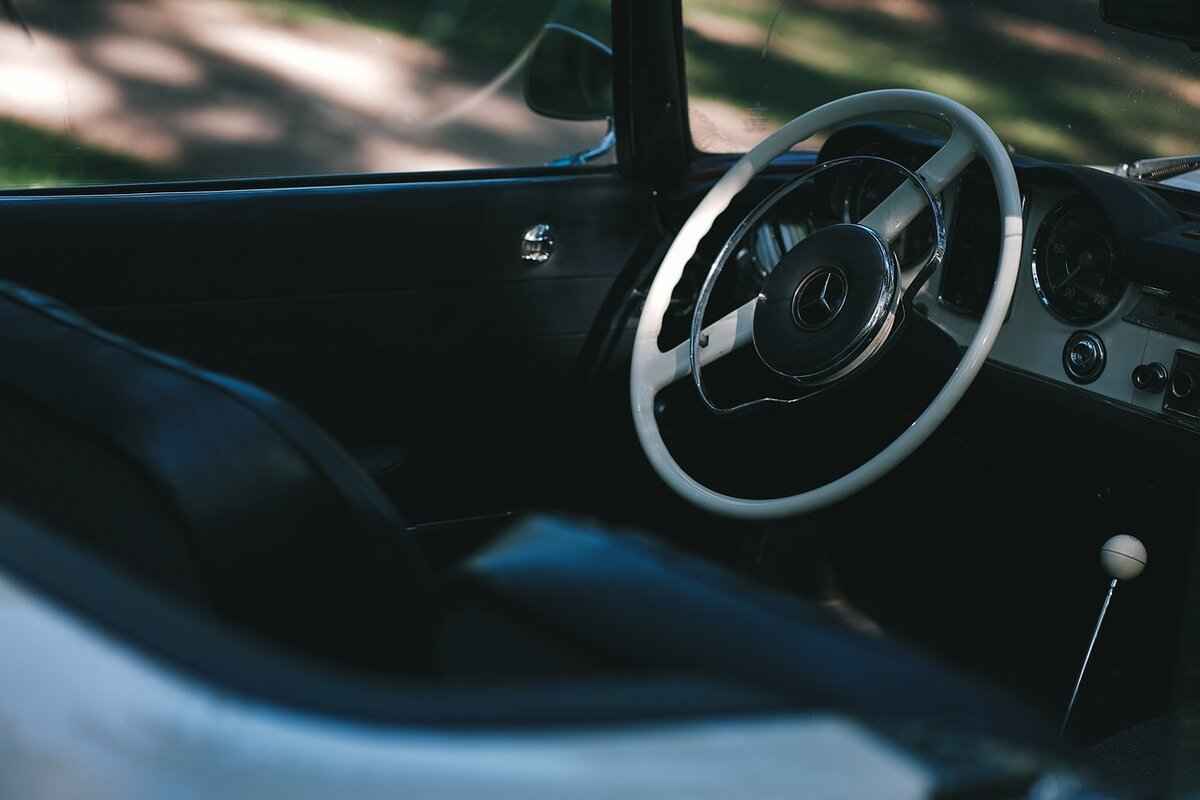
Safe Cleaning Solutions
When it comes to maintaining the appearance and integrity of your car’s headliner, choosing the right cleaning solution is essential. An inappropriate cleaner can lead to stains, discoloration, or even damage to the material. Here, we will explore various safe and effective cleaning options suitable for different types of headliner materials.
- Water and Mild Detergent: This is a classic solution that works well for most headliners. Mix a small amount of mild detergent with warm water to create a gentle cleaning solution. Use a microfiber cloth to apply the mixture, ensuring you do not oversaturate the fabric. This method is particularly effective for fabric headliners, which can easily attract dirt and grime.
- Upholstery Cleaner: Specialized upholstery cleaners are designed to tackle stains on various fabrics without causing damage. Look for products that are labeled as safe for automotive use. Always conduct a patch test in an inconspicuous area before applying it to the entire headliner. This ensures that the cleaner will not alter the color or texture of the material.
- Vinegar Solution: A mixture of equal parts vinegar and water can be a powerful yet safe cleaning solution. Vinegar is known for its odor-neutralizing properties and can also help lift stains. However, use this solution sparingly on sensitive materials, as excessive moisture can lead to peeling or sagging.
- Foam Cleaners: Foam cleaners can be a great option for headliners, especially for those with stubborn stains. These cleaners allow for a targeted application, minimizing the risk of oversaturation. Apply the foam directly to the stain and gently work it with a soft brush or cloth, then wipe away any excess with a clean, damp cloth.
- Steam Cleaning: For those who prefer a chemical-free option, steam cleaning can effectively clean headliners without introducing moisture that can damage the material. The high temperature of the steam helps to lift dirt and grime. Ensure that the steam cleaner is used at a safe distance to avoid saturating the fabric.
In addition to these cleaning solutions, it’s important to remember that regular maintenance plays a significant role in preserving your headliner. Keeping it free from dust and debris can prevent the need for more intensive cleaning down the line. Always ensure that any cleaning solution is compatible with the specific material of your headliner to avoid damaging it.
By understanding the appropriate cleaning solutions for your car’s headliner, you can maintain its appearance and longevity without the risk of causing damage. Remember to always test any new cleaning product on a small area first to ensure its safety and effectiveness.
Water and Mild Detergent
Water and Mild Detergent: A Simple Yet Effective Cleaning SolutionCleaning your car’s headliner can seem daunting, but with the right approach, it can be a straightforward task. One of the most recommended methods for maintaining the cleanliness of your headliner involves using a simple solution of water mixed with mild detergent. This combination is not only gentle but also remarkably effective in removing dirt, stains, and odors without damaging the material.- Why Choose Water and Mild Detergent?
- How to Prepare the Cleaning Solution
- Application Process
- Tips for Effective Cleaning
- Drying Your Headliner
- Regular Maintenance
The primary advantage of using water and mild detergent lies in its non-abrasive nature. Unlike harsh chemicals that can lead to discoloration or degradation of the fabric, this solution provides a safe alternative for various headliner materials, including fabric and vinyl. The mild detergent helps to break down grease and grime, making it easier to lift away dirt without excessive scrubbing.
To create your cleaning solution, mix a few drops of mild detergent with warm water in a spray bottle. Aim for a dilution ratio of 1:10 (one part detergent to ten parts water). This ensures that the solution is effective yet gentle enough for regular use. Always choose a detergent that is free from bleach and harsh fragrances to protect your headliner.
Begin by vacuuming the headliner to remove any loose dirt or debris. Once the surface is prepped, lightly mist the cleaning solution onto a microfiber cloth rather than directly on the headliner. This prevents oversaturation, which can lead to moisture damage. Gently dab or wipe the stained areas, working in small sections to ensure thorough cleaning without risking damage to the adhesive that holds the headliner in place.
When using this method, it’s essential to avoid soaking the fabric. Instead, focus on gentle, circular motions to lift stains without pushing them deeper into the fibers. For stubborn stains, allow the solution to sit for a few minutes before blotting it away with a clean, dry cloth.
After cleaning, allow the headliner to air dry completely. Avoid using heat sources like hair dryers, as they can cause the material to warp or shrink. Ensure that the vehicle is parked in a well-ventilated area to facilitate the drying process.
Incorporating this cleaning solution into your regular car maintenance routine can help keep your headliner looking fresh. Aim to clean it every few months or as needed, especially if you notice any stains or odors developing.
In summary, a simple solution of water mixed with mild detergent is a practical choice for maintaining your car’s headliner. It effectively removes dirt and stains while preserving the integrity of the material. By following the steps outlined above, you can ensure that your vehicle’s interior remains clean and inviting.
Upholstery Cleaner
When it comes to maintaining the interior of your vehicle, upholstery cleaners play a crucial role in ensuring that your car’s fabrics remain clean and well-preserved. These specialized cleaners are formulated to tackle various types of upholstery, including the delicate materials often found in car headliners. Understanding how to choose and use these cleaners effectively can make a significant difference in the longevity and appearance of your vehicle’s interior.
Upholstery cleaners are products specifically designed to clean and maintain different types of fabrics. They come in various forms, including sprays, foams, and liquid solutions. Each type is tailored to address specific cleaning needs, making it essential to select the right one based on the material you are working with.
Before applying any upholstery cleaner to your car’s headliner, it is vital to conduct a test on a small area. This step ensures that the cleaner is compatible with the fabric and will not cause discoloration or damage. Choose an inconspicuous spot, apply the cleaner, and wait for it to dry to assess any adverse effects.
Not all upholstery cleaners are created equal. When selecting a cleaner for your car headliner, consider the following:
- Material Compatibility: Ensure that the cleaner is suitable for the specific type of fabric used in your headliner.
- Stain-Fighting Properties: Look for cleaners with strong stain-fighting capabilities, especially if your headliner has visible marks.
- pH Balance: A pH-balanced cleaner is less likely to harm delicate fabrics.
Once you have chosen the right upholstery cleaner, applying it correctly is essential for effective cleaning:
1. Start by vacuuming the headliner to remove loose dirt and debris.2. Shake the upholstery cleaner well before use.3. Apply the cleaner to a microfiber cloth, avoiding direct spraying onto the headliner.4. Gently blot the stained area without rubbing, which can damage the fabric.5. Allow the cleaner to sit for a few minutes to penetrate the stain.6. Wipe away the cleaner with a clean, damp cloth to remove any residue.
While cleaning your car headliner with upholstery cleaner, avoid these common pitfalls:
- Oversaturating the Fabric: Excess moisture can lead to sagging or peeling of the headliner material.
- Using Harsh Chemicals: Avoid bleach or strong solvents that can damage the fabric.
- Skipping the Test Patch: Always test a small area first to ensure compatibility.
Regular maintenance can prolong the life of your car’s headliner and reduce the need for deep cleaning. Here are some tips:
- Frequent Dusting: Use a soft brush or microfiber cloth to dust the headliner regularly.
- Promptly Address Stains: The sooner you treat a stain, the easier it will be to remove.
- Use Fabric Protectors: Consider applying a fabric protector to repel stains and spills.
By understanding the importance of upholstery cleaners and how to use them effectively, you can maintain your car’s interior in excellent condition. Always remember to prioritize safety and compatibility to ensure the best results.
Vinegar Solution
Cleaning car interiors can be a daunting task, especially when dealing with stubborn stains and unpleasant odors. One effective solution that has gained popularity among car owners is a vinegar and water mixture. This natural cleaning agent not only helps in eliminating odors but also works wonders on various stains. However, it’s essential to understand how to use it properly to avoid damaging sensitive materials.
Vinegar is known for its antimicrobial properties, making it an excellent choice for cleaning. It can effectively neutralize odors caused by mildew, smoke, and food spills. When mixed with water, vinegar creates a gentle solution that is safe for many surfaces, including car headliners. This makes it a preferred choice for those looking to maintain a clean and fresh interior without resorting to harsh chemicals.
To create a vinegar cleaning solution, you’ll need:
- 1 part white vinegar
- 1 part water
- A clean spray bottle
Simply mix the vinegar and water in the spray bottle and shake gently to combine. This solution can be used for spot cleaning or for more extensive cleaning tasks, depending on the level of dirt and odor present.
When applying the vinegar solution, it’s crucial to use the right techniques to prevent damage:
- Spot Testing: Always perform a spot test in an inconspicuous area before applying the solution to the entire surface. This helps ensure that the vinegar does not cause discoloration or damage.
- Gentle Application: Use a microfiber cloth or a soft brush to apply the solution. Avoid oversaturating the area, as excess moisture can lead to sagging or peeling.
- Blotting: For stains, gently blot the area rather than rubbing, which can damage the fibers.
While vinegar is generally safe for many materials, there are some precautions to keep in mind:
- Sensitive Materials: Avoid using vinegar on delicate fabrics or materials that can be easily damaged, such as suede or certain synthetic fibers.
- Odor: Although vinegar effectively eliminates odors, it has its own strong scent. Ensure proper ventilation in the vehicle while cleaning.
- Frequency: Use the vinegar solution sparingly. Overuse can lead to a buildup of residue or potential damage to the headliner adhesive.
Using a vinegar and water solution can be a highly effective method for maintaining a clean and odor-free car interior. By following the proper application techniques and taking necessary precautions, you can harness the power of this natural cleaner while preserving the integrity of your vehicle’s materials. Remember to always test on a small area first and use the solution sparingly to avoid any unwanted damage.
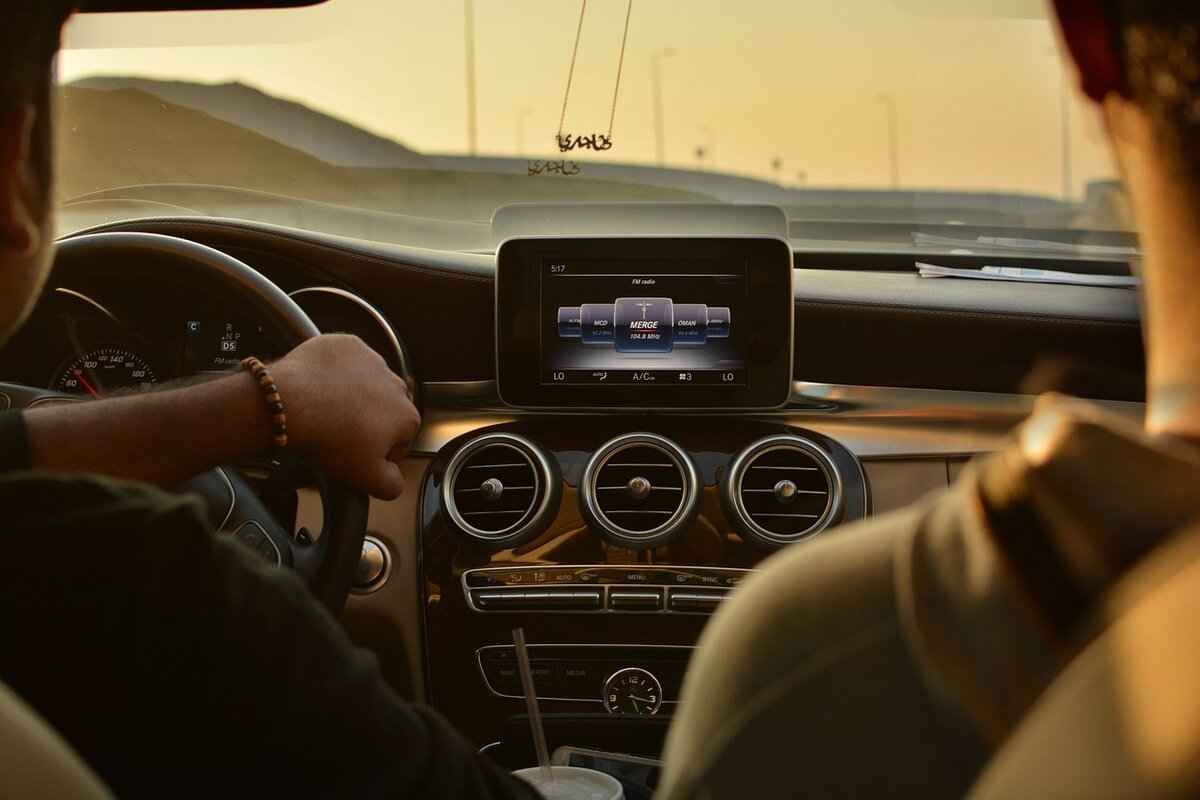
Step-by-Step Cleaning Process
Cleaning your car headliner requires a careful and methodical approach to ensure that you achieve the best results without causing any damage. Below is a detailed step-by-step guide that will help you clean your car headliner effectively.
- Preparation
Before diving into the cleaning process, it is crucial to gather all necessary tools and materials. This includes soft brushes, microfiber cloths, a vacuum cleaner with a brush attachment, and your chosen cleaning solution. Make sure to park your vehicle in a shaded area to prevent the cleaning products from drying too quickly, which can lead to streaks or damage.
- Testing a Small Area
Once you have everything ready, the next step is to test your cleaning solution. Choose a small, inconspicuous area of the headliner and apply a small amount of the cleaning solution using a microfiber cloth. This step is vital to ensure that the cleaner will not cause discoloration or damage to the fabric. Wait a few minutes to observe any adverse reactions, such as fading or discoloration.
- Cleaning the Headliner
After confirming that the cleaning solution is safe to use, you can begin the actual cleaning process. Start by using a vacuum cleaner with a brush attachment to remove any loose dirt and debris from the headliner. This step will make it easier to clean the fabric and prevent dirt from becoming embedded during the cleaning process.
Next, take a soft brush and gently agitate the surface of the headliner to loosen any dirt or stains. It is important to apply the cleaning solution in small sections, using a microfiber cloth to dab the solution onto the surface. Avoid oversaturation, as too much moisture can lead to sagging or peeling of the headliner material.
- Spot Cleaning
For stubborn stains, consider using a more targeted approach. Apply a small amount of the cleaning solution directly to the stain and gently scrub with a soft brush or cloth. Be patient and avoid aggressive scrubbing, which can damage the fibers. After treating the stain, wipe the area with a clean, damp microfiber cloth to remove any residue.
- Drying the Headliner
Once you have finished cleaning, it is essential to allow the headliner to air dry completely. Open the car doors and windows to promote airflow, which will help speed up the drying process. Avoid using heat sources like hair dryers or heaters, as these can warp or damage the headliner material.
- Regular Maintenance
To keep your headliner looking fresh, regular maintenance is key. Make it a habit to vacuum and dust the headliner periodically to prevent dirt buildup. Additionally, consider applying a fabric protector to enhance the durability of the headliner and provide resistance against future stains.
In summary, following this step-by-step cleaning process will help you maintain your car headliner effectively while preventing damage. By preparing properly, testing cleaning solutions, and using gentle techniques, you can ensure that your vehicle’s interior remains clean and inviting.
Preparation
Preparation for Cleaning Your Car HeadlinerBefore diving into the cleaning process, it’s crucial to set the stage properly. A well-prepared environment and the right tools can make a significant difference in the outcome of your cleaning efforts. Here’s a comprehensive guide on how to prepare effectively for cleaning your car headliner.
The first step in your preparation is to gather all necessary tools and cleaning solutions. This includes:
- Soft Brushes: Ideal for gently loosening dirt without damaging the fabric.
- Microfiber Cloths: Perfect for applying cleaning solutions and wiping away dirt.
- Vacuum Cleaner: Equipped with a brush attachment to remove loose debris.
- Cleaning Solutions: Options like mild detergent, upholstery cleaner, or a vinegar solution.
Next, it’s essential to choose the right location for cleaning. Ensure the vehicle is parked in a shaded area. This is important for several reasons:
- Prevents Quick Drying: Cleaning products can dry too quickly in direct sunlight, leading to streaks or uneven cleaning results.
- Comfortable Working Environment: A shaded area keeps you comfortable while you work, making the cleaning process more enjoyable.
Before you start cleaning, prepare the vehicle’s interior by removing any items that may obstruct your access to the headliner. This includes:
- Taking out any personal belongings, such as bags or tools.
- Removing any loose items from the seats and floor to prevent them from getting in the way.
- If applicable, lowering the windows slightly to allow for ventilation during the cleaning process.
Before applying any cleaning solutions, it’s wise to assess the condition of the headliner. Look for signs of stains, sagging, or damage. This assessment will guide you in choosing the appropriate cleaning method:
- Stains: Identify the type of stains (e.g., food, drink, or mildew) to select the right cleaning solution.
- Sagging: If the headliner is sagging, be gentle during cleaning to avoid further damage.
Before applying any cleaning solution to the entire headliner, test a small area first. This will help ensure that the cleaner does not cause discoloration or damage:
- Choose an inconspicuous spot on the headliner.
- Apply a small amount of the cleaning solution and let it sit for a few minutes.
- Inspect the area for any adverse reactions before proceeding with the full cleaning.
By following these preparation steps, you’ll be well-equipped to clean your car headliner effectively and safely. The right tools, a suitable environment, and a thorough assessment will contribute to a successful cleaning experience, ensuring that your vehicle’s interior remains in excellent condition.
Testing a Small Area
When it comes to cleaning your car headliner, one of the most crucial steps is to test a small area before applying any cleaning solution to the entire surface. This precautionary measure helps ensure that the cleaner you choose will not cause any discoloration or damage to the fabric or material of the headliner.
Why Testing is Essential
Car headliners are made from various materials, including fabric, vinyl, and foam-backed options. Each of these materials reacts differently to cleaning agents. Testing a small, inconspicuous area allows you to observe how the material responds to the cleaner without risking visible damage. This is particularly important for delicate fabrics that may stain or discolor easily.
Steps to Test Your Cleaning Solution
- Select a Hidden Spot: Choose a small area that is not easily visible, such as near the edges or behind a sun visor. This way, if any adverse reaction occurs, it will be less noticeable.
- Apply the Cleaner: Dampen a microfiber cloth with your chosen cleaning solution. Gently dab the cloth onto the test area, ensuring you do not oversaturate the material.
- Observe for Reactions: After applying the cleaner, wait for a few minutes to observe any changes in color or texture. Look for signs of fading, discoloration, or damage.
- Evaluate the Results: If the test area shows no adverse effects, you can proceed with cleaning the rest of the headliner. If you notice any negative reactions, it’s best to try a different cleaner or method.
Choosing the Right Cleaner
To minimize the risk of damage, opt for gentle, non-toxic cleaning solutions. A mixture of water and mild detergent is often effective for most headliner materials. Additionally, specialized upholstery cleaners can be a safe choice if they are compatible with your headliner type. Always read the label and instructions before use.
Common Mistakes to Avoid
- Skipping the Test: Never skip the testing step, even if you have used a product before. Different headliners may react differently based on their condition and age.
- Using Harsh Chemicals: Avoid cleaners containing bleach or strong solvents, as they can cause irreversible damage to the headliner.
- Over-Saturating: Applying too much cleaner can lead to moisture damage, including mold growth or sagging. Always use a damp cloth rather than soaking the material.
In summary, testing a small area of your car headliner is a simple yet vital step in the cleaning process. By taking the time to ensure that your chosen cleaner is safe for your specific material, you can maintain the integrity and appearance of your vehicle’s interior. Following these guidelines will help you achieve a clean headliner without the risk of damage, ensuring that your car remains in top condition for years to come.
Cleaning the Headliner
Cleaning the headliner of your vehicle is an essential task that can greatly enhance the overall appearance and hygiene of your car’s interior. A clean headliner not only improves aesthetics but also contributes to a healthier environment by reducing allergens and odors. Below, we will delve into the effective techniques and methods for cleaning your car’s headliner without causing damage.
- Preparation is Key: Before you start cleaning, gather all necessary tools and materials. This includes a soft brush, microfiber cloths, a vacuum cleaner with a brush attachment, and your chosen cleaning solution. Having everything at hand will make the process smoother and more efficient.
- Vacuuming: Begin by using a vacuum cleaner with a brush attachment to remove loose dirt and debris from the headliner. This step is crucial as it prevents dirt from becoming embedded in the fabric during the cleaning process. Make sure to vacuum gently to avoid damaging the material.
- Testing the Cleaning Solution: Before applying any cleaning solution directly to the headliner, it’s important to test it on a small, inconspicuous area. This will help you determine if the solution affects the color or texture of the material. Allow the test area to dry fully before assessing any changes.
- Gentle Agitation: Using a soft brush, gently agitate the surface of the headliner to loosen any dirt or stains. Be careful not to scrub too hard, as this can damage the fabric or adhesive that holds the headliner in place.
- Application of Cleaning Solution: Once the surface is agitated, apply your cleaning solution using a microfiber cloth. It’s best to work in small sections to avoid oversaturation, which can lead to water damage or sagging. Lightly dampen the cloth and gently wipe the surface, ensuring you don’t soak the material.
- Stain Removal: For stubborn stains, you may need to apply a bit more cleaning solution directly to the affected area. Allow it to sit for a few minutes before gently blotting with a clean microfiber cloth. Avoid rubbing, as this can spread the stain or damage the fabric.
- Drying the Headliner: After cleaning, it’s essential to let the headliner air dry completely. Avoid using heat sources like hair dryers, as these can warp or damage the material. Ensure that the vehicle is parked in a well-ventilated area to facilitate drying.
- Regular Maintenance: To keep your headliner looking fresh, incorporate regular maintenance into your cleaning routine. Dusting and vacuuming the headliner periodically will help prevent dirt buildup. Additionally, consider using a fabric protector to enhance its durability and resistance to stains.
By following these steps, you can effectively clean your car’s headliner while maintaining its integrity and appearance. Regular care and attention will not only prolong the life of the headliner but also contribute to a more pleasant driving experience.
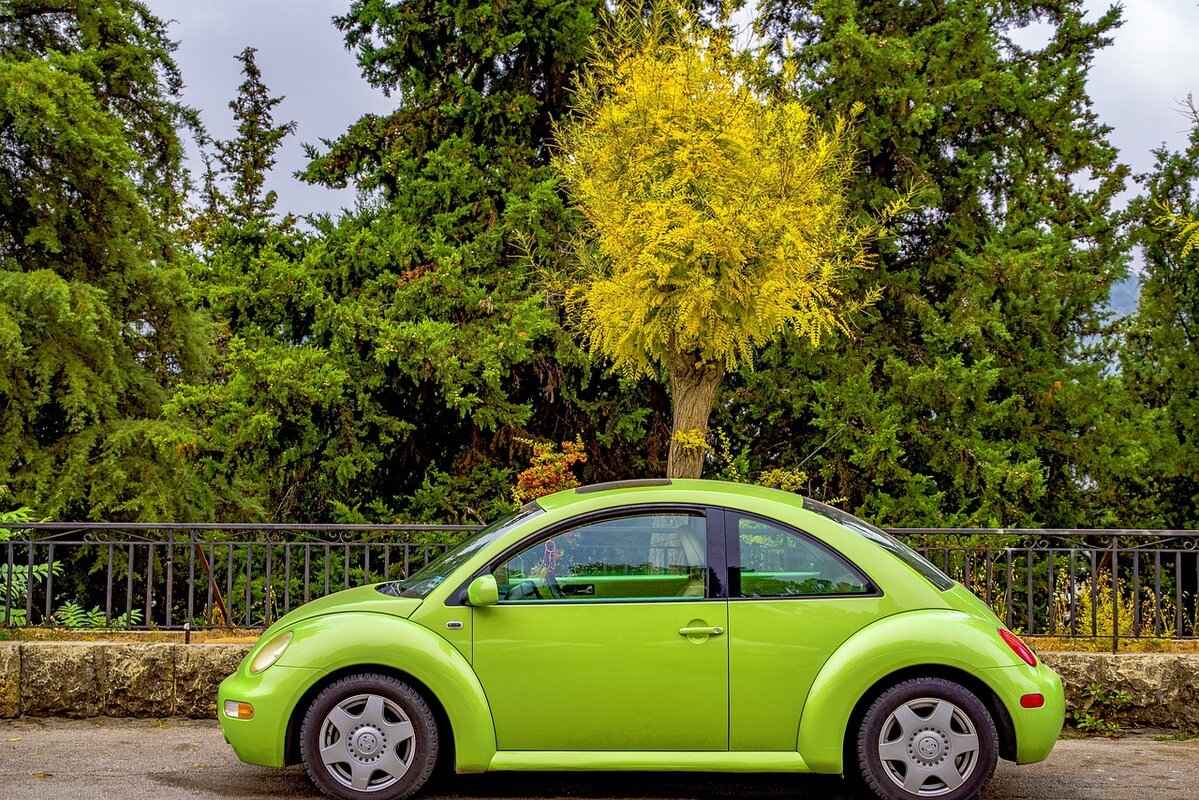
Drying and Maintenance Tips
Proper drying techniques are essential to prevent water damage and maintain the headliner’s integrity. Here are tips for drying and ongoing maintenance that will help extend the life of your car’s interior.
- Air Drying: After cleaning your headliner, it is crucial to allow it to air dry completely. This method prevents moisture from being trapped, which can lead to mold and mildew growth. Avoid using heat sources such as hair dryers or heaters, as they can warp or damage the material. Place the vehicle in a shaded area to facilitate a natural drying process.
- Gentle Handling: While the headliner is drying, handle it with care. Avoid pressing against it or placing any items on top of it, as this can cause dents or distortions in the fabric. If you need to move the vehicle, do so gently to minimize vibrations that could affect the drying process.
- Regular Maintenance: To prevent dirt buildup, regularly dust and vacuum the headliner. Use a soft brush attachment to gently remove dust and debris without damaging the fabric. This routine maintenance will keep your headliner looking fresh and can help prevent the need for deep cleaning.
- Use of Fabric Protectors: Consider applying a fabric protector designed for automotive interiors. These products can enhance the durability of the headliner and provide additional resistance to stains and spills. Always follow the manufacturer’s instructions when applying these protectors.
- Monitor for Issues: Regularly inspect your headliner for signs of sagging, stains, or odors. Early detection of these issues can help you address them before they become more significant problems. If you notice any persistent odors, it may indicate trapped moisture or mildew, necessitating immediate action.
- Professional Cleaning Services: If your headliner is heavily soiled or shows signs of damage, consider hiring a professional cleaning service. Professionals have specialized tools and expertise to clean and restore your headliner effectively without causing harm. This option is particularly valuable for delicate materials that require extra care.
- Seasonal Checks: Depending on your climate, it may be beneficial to perform seasonal checks on your headliner. In humid conditions, moisture can accumulate, leading to mold growth. Conversely, in dry climates, materials may become brittle. Adjust your cleaning and maintenance routine accordingly to suit your environment.
Maintaining the integrity of your car’s headliner is vital for both aesthetics and functionality. By following these drying and maintenance tips, you can ensure that your vehicle remains in excellent condition, enhancing your driving experience for years to come.
Air Drying
Air Drying: The Key to Maintaining Your Car HeadlinerWhen it comes to cleaning your car headliner, is an essential step that should not be overlooked. After you’ve completed the cleaning process, allowing the headliner to air dry completely is crucial for preserving its integrity and appearance. This section will explore the importance of air drying, the potential risks of using heat sources, and best practices to ensure your headliner remains in excellent condition.
Why Air Drying is Essential
Air drying is vital for several reasons. First, it helps to prevent moisture from becoming trapped within the headliner material, which can lead to issues such as mildew growth and unpleasant odors. When moisture is sealed inside, it creates a breeding ground for bacteria and mold, which can compromise the air quality inside your vehicle.
Additionally, allowing the headliner to air dry helps maintain the adhesive that holds it in place. When the headliner gets too wet, the adhesive can weaken, leading to sagging or detachment. By air drying, you ensure that the adhesive remains intact, preserving the structure of your headliner.
The Risks of Using Heat Sources
While it may be tempting to speed up the drying process using heat sources such as hair dryers or heaters, this practice can be detrimental. Heat can warp or damage the material of the headliner, leading to irreversible changes in texture and appearance. For instance, vinyl headliners can become brittle and crack, while fabric headliners may shrink or become discolored.
Moreover, excessive heat can also affect the adhesives used in the headliner, causing them to break down prematurely. This can result in sagging or peeling, which not only looks unsightly but can also require costly repairs or replacements.
Best Practices for Air Drying Your Headliner
To ensure effective air drying, follow these best practices:
- Park in a Shaded Area: Always clean and dry your headliner in a shaded spot to prevent direct sunlight from causing uneven drying or fading.
- Use a Fan: If possible, use a fan to circulate air in the vehicle. This can help speed up the drying process without the risks associated with heat.
- Check for Moisture: Periodically check the headliner for any signs of remaining moisture. If necessary, gently wipe the surface with a dry microfiber cloth to absorb excess water.
- Allow Time: Be patient. Depending on the humidity and temperature, air drying can take several hours. Ensure that the headliner is completely dry before closing the vehicle.
Conclusion
In summary, air drying is a critical step in maintaining your car headliner after cleaning. By avoiding heat sources and following best practices, you can ensure that your headliner remains in good condition, free from moisture-related issues and damage. Proper care will extend the lifespan of your vehicle’s interior and keep it looking its best for years to come.
Regular Maintenance
Maintaining your car’s headliner is crucial for preserving the aesthetic appeal and functionality of your vehicle’s interior. Regular maintenance not only enhances the durability of the headliner but also prevents the buildup of dirt and grime that can lead to more significant issues down the line. Here are some essential practices to keep your car headliner in top condition.
- Routine Dusting: Dust can accumulate quickly on the headliner, especially in vehicles that are frequently used. Using a soft brush or a microfiber cloth to gently dust the headliner on a regular basis can help prevent dirt buildup. This simple act can significantly prolong the life of the fabric and maintain its appearance.
- Vacuuming: A vacuum cleaner with a brush attachment is an excellent tool for removing loose dirt and debris. Aim to vacuum the headliner at least once a month. This practice will not only keep the headliner clean but also prevent particles from settling into the fabric, which can lead to stains over time.
- Spot Cleaning: If you notice any stains or spots, address them immediately. Use a mild detergent mixed with water and a microfiber cloth to gently dab the affected area. Avoid rubbing aggressively, as this can damage the fabric. For tougher stains, consider using a specialized upholstery cleaner, but always test it on a small, inconspicuous area first.
- Fabric Protectors: Applying a fabric protector can enhance the durability of your headliner and provide additional resistance to stains. These products create a barrier that repels liquids and dirt, making future cleanups easier. Ensure that the protector is compatible with your headliner material before application.
- Temperature Control: Extreme temperatures can affect the adhesive used in headliners, leading to sagging or peeling. Park your vehicle in shaded areas or use sunshades to minimize exposure to direct sunlight. In colder climates, avoid leaving the vehicle in freezing temperatures for extended periods, as this can also affect the materials.
By incorporating these regular maintenance practices into your routine, you can ensure that your car’s headliner remains clean, fresh, and in excellent condition. Regular attention to the headliner not only enhances your driving experience but also contributes to the overall value of your vehicle.
In summary, maintaining your car headliner is a straightforward process that can yield significant benefits. With a little time and effort, you can keep your vehicle’s interior looking its best while preventing costly repairs in the future. Remember, a clean and well-maintained headliner reflects your care for your vehicle and enhances the comfort of every journey.
Professional Cleaning Services
When it comes to maintaining the pristine condition of your vehicle’s interior, the headliner often requires special attention due to its delicate nature. If you find your headliner heavily soiled or damaged, it might be time to consider . These experts possess the necessary tools and expertise to restore your headliner without causing any harm.
- Expertise and Experience: Professional cleaners are trained to handle various materials and understand the specific cleaning requirements for each type. Their experience allows them to identify potential issues that an untrained eye might miss.
- Specialized Equipment: They utilize specialized tools designed for cleaning headliners, such as steam cleaners and upholstery extractors. These tools can effectively remove dirt, stains, and odors without damaging the fabric or adhesive.
- Safe Cleaning Solutions: Professionals often use eco-friendly and safe cleaning solutions that are effective yet gentle on your headliner. This minimizes the risk of discoloration or damage that can occur with harsh chemicals.
- Time-Saving: Hiring a professional can save you time and effort. Cleaning a headliner can be a meticulous process, and professionals can often complete the job more efficiently.
- Long-Term Benefits: Regular professional cleaning can extend the lifespan of your headliner, maintaining the overall aesthetic of your vehicle and potentially increasing its resale value.
When to Seek Professional Help
It’s essential to recognize the signs that indicate your headliner needs professional attention. If you notice persistent stains, unpleasant odors, or sagging, it may be beyond a simple DIY cleaning. Professionals can also address underlying issues, such as failing adhesive or moisture damage, which might not be apparent at first glance.
Cost Considerations
While hiring a professional cleaning service may seem like an added expense, it can be a worthwhile investment. The cost typically varies based on the extent of the cleaning required, the type of vehicle, and the service provider. However, the benefits of restoring your headliner properly often outweigh the costs associated with DIY attempts that could lead to further damage.
Finding the Right Service
When choosing a professional cleaning service, consider looking for those with good reviews and a solid reputation in your area. It’s advisable to ask about their experience with headliners specifically and the methods they use. Don’t hesitate to request quotes from multiple services to ensure you receive a fair price for quality work.
In conclusion, while cleaning your car’s headliner might be a task you consider tackling yourself, there are significant advantages to hiring a professional service. Their expertise, specialized tools, and safe cleaning methods can restore your headliner effectively, ensuring it remains in excellent condition for years to come. By recognizing when to seek help and understanding the benefits of professional cleaning, you can maintain the beauty and integrity of your vehicle’s interior.
Frequently Asked Questions
- How often should I clean my car headliner?
It’s best to clean your car headliner every 6 months to a year, depending on usage. Regular maintenance helps prevent dirt buildup and keeps your interior looking fresh.
- Can I use bleach to clean my headliner?
No, using bleach is a big no-no! It can cause discoloration and damage the fabric. Stick to mild detergents or specialized upholstery cleaners for safe results.
- What should I do if my headliner is sagging?
If your headliner is sagging, cleaning it may help temporarily, but you might need to re-glue it for a permanent fix. Consider consulting a professional if you’re unsure how to proceed.
- Is it safe to use a steam cleaner on my headliner?
Using a steam cleaner can be risky, especially on sensitive materials. If you choose to use one, keep it at a safe distance and test a small area first to avoid damage.
- How can I remove odors from my headliner?
A vinegar and water solution can work wonders for odors, but use it sparingly. Regular vacuuming and cleaning will help keep your headliner smelling fresh.

